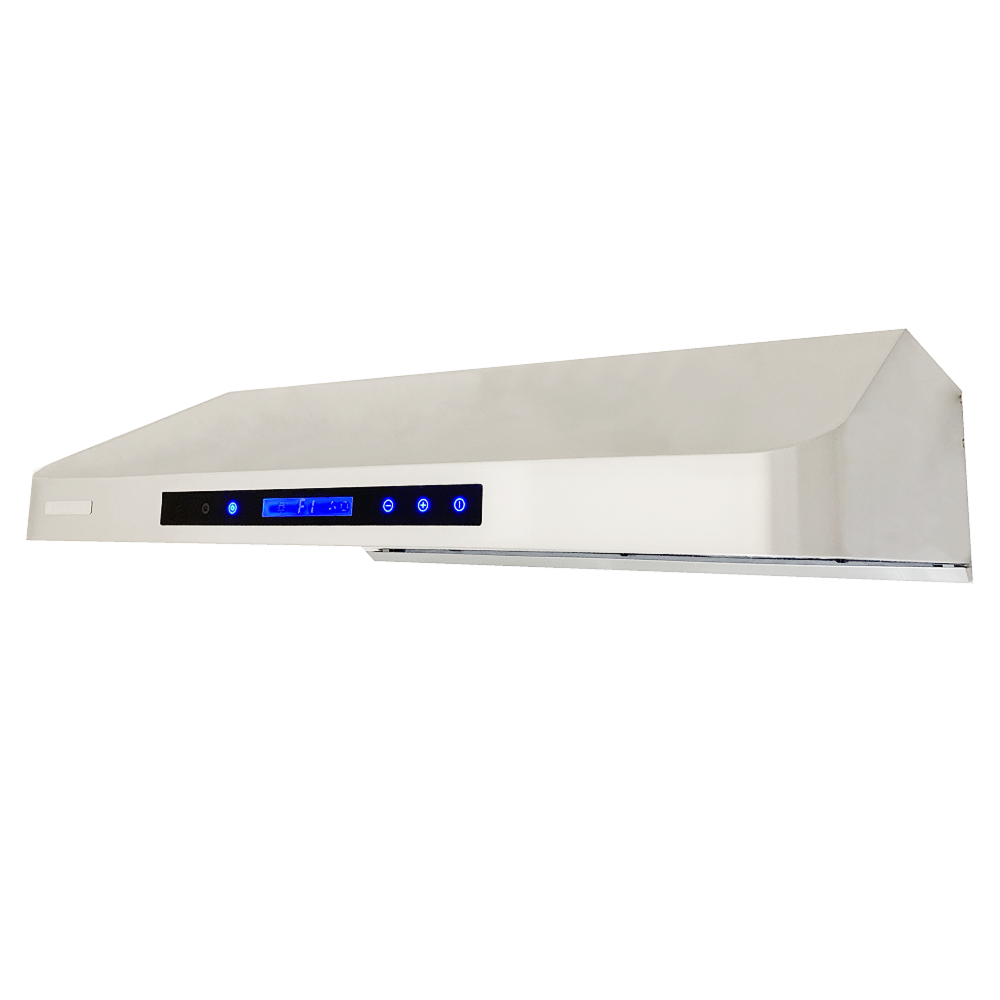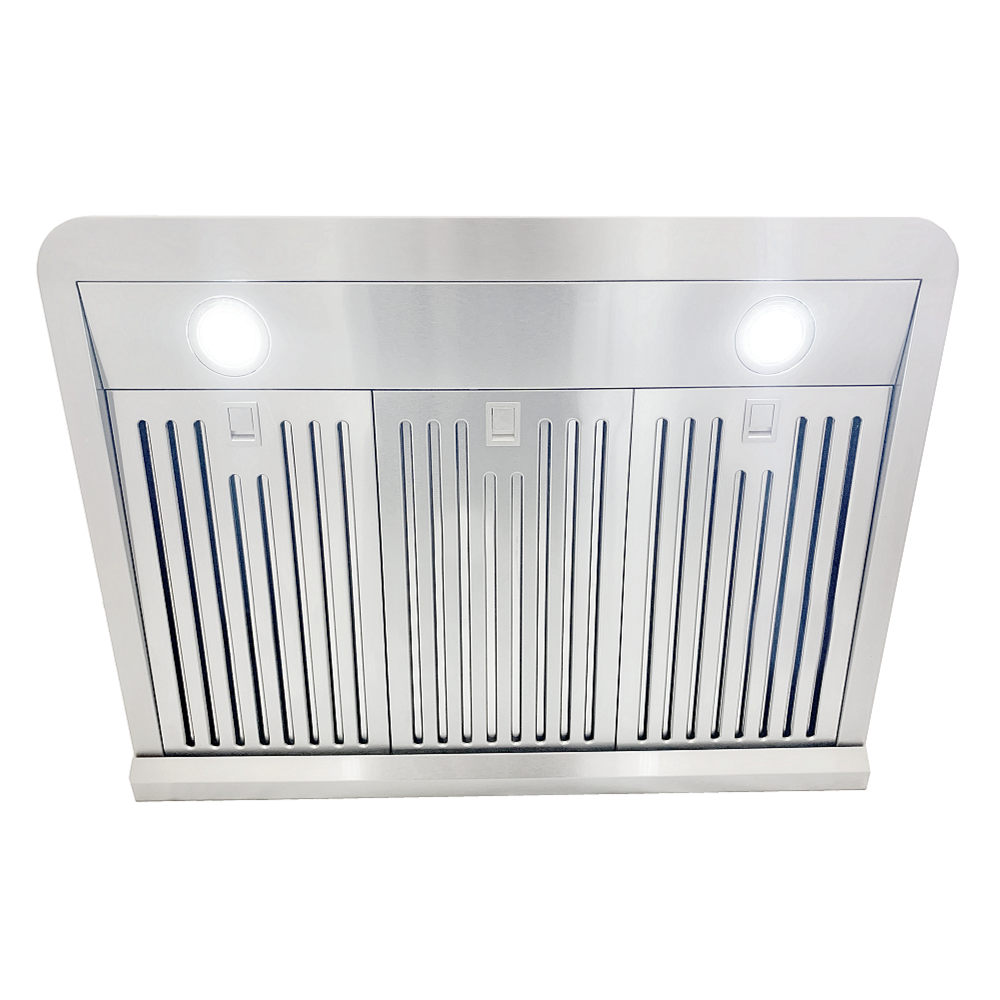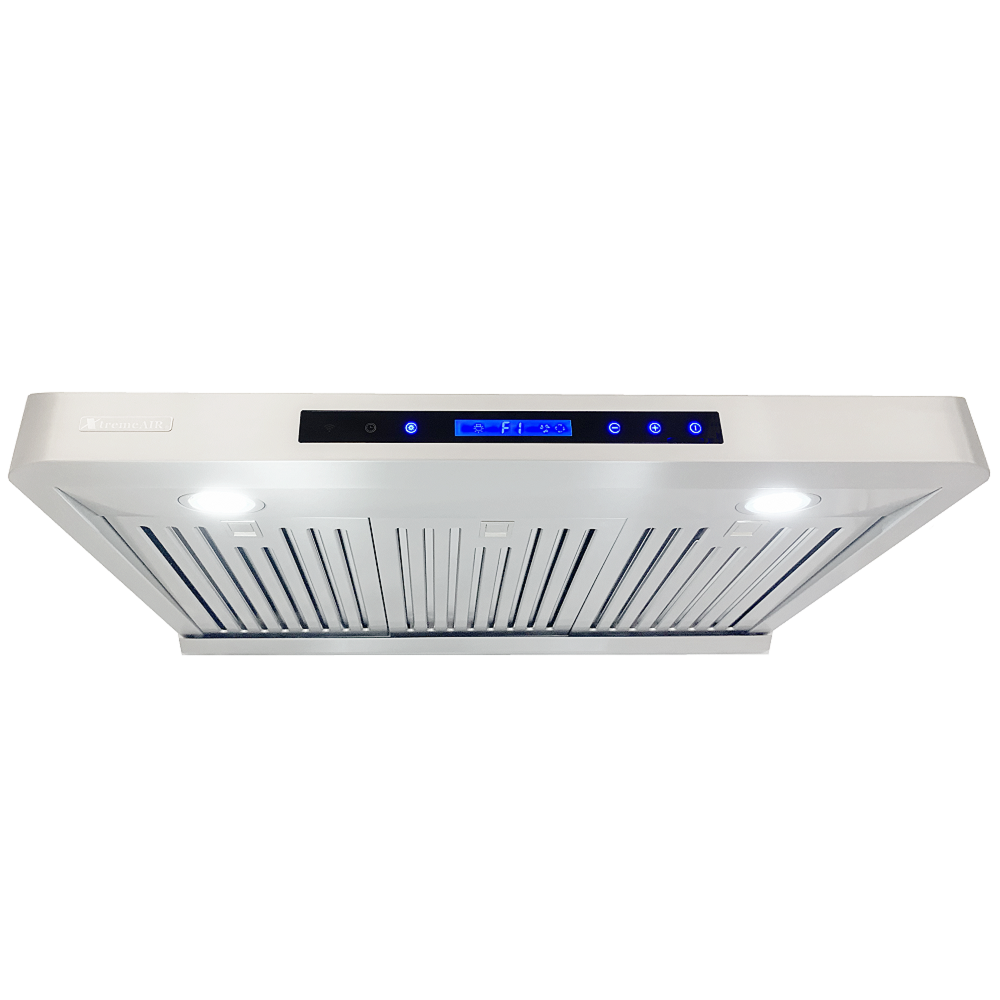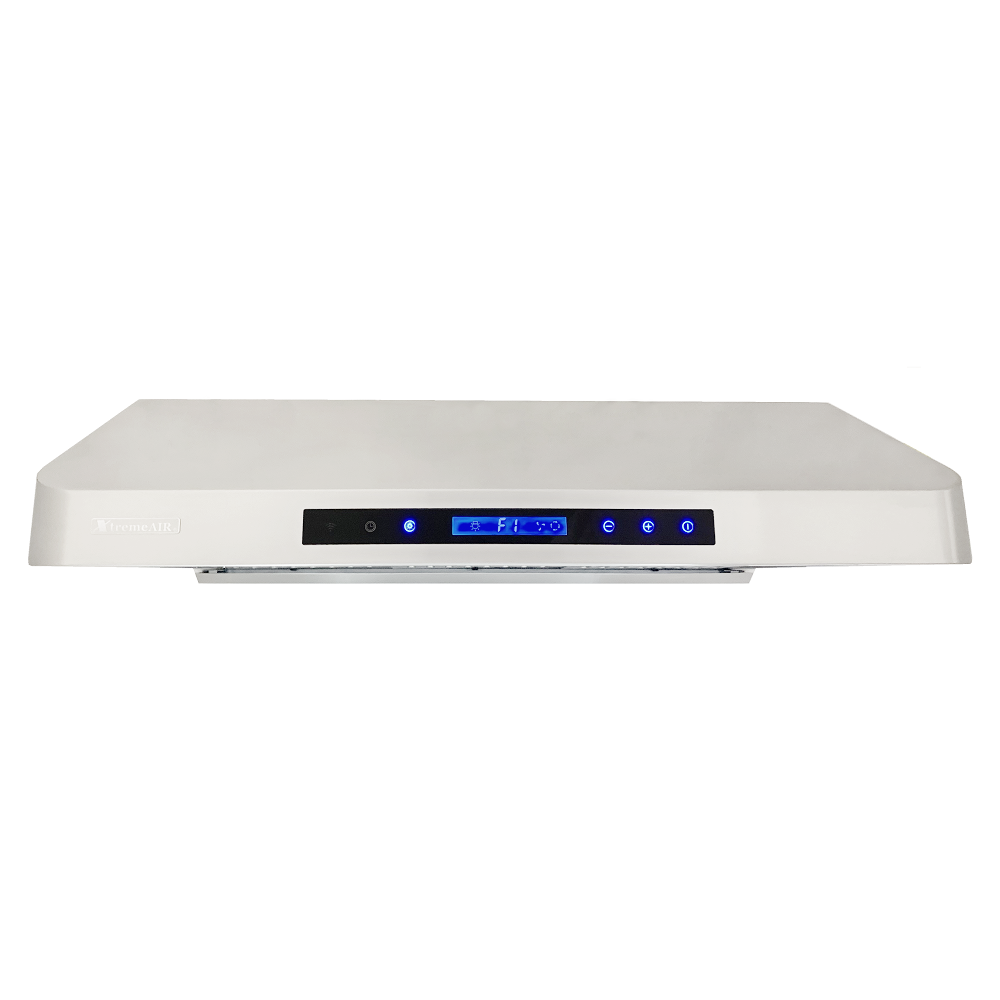XtremeAir Pro-X Series Slim 36" Non-Magnetic Stainless Steel Under Cabinet Range Hood Radius Corner With Grease Drain Tunnel
XtremeAir Pro-X Series Slim 36" Non-Magnetic Stainless Steel Under Cabinet Range Hood Radius Corner With Grease Drain Tunnel
Couldn't load pickup availability
✔ Same-Day Order Processing
Got a question?
• Text or call 800-814-9816
• Email support@kitchenoasis.com
• Start a live chat
Our team is available to serve you 8:00 AM - 11:59 PM ET, 7 days a week.

Pro-X Series PX10-U367, Slim height, 36" width, 900 CFM Appx., Baffle filters, Radius corner, Full seamless 1.0 mm Non-magnetic S.S, Under cabinet hood
What’s Included
- Body & Main Unit
- Long Oil Container
- Drip Tray
- Installation Manual
- Baffle Filter
- 6pieces Screws
- Remote Control
Features
- AIRFLOW max: 900 CFM Approx
- Slim 7" tall profile, sides and top curve body design
- Durable stainless steel baffle filters - dishwasher-safe
- Squirrel cage blowers
- NON-magnetic high quality stainless steel
- Beautiful seamless radius corner construction
- Beautiful 4 speeds screen touch sensitive electronic control w/ blue LED Display
- 2 Universal LED GU10 base task lights
- 1-15 min programmable delay power auto shut off
- Remote Control
10 Reasons To Have A Range Hood
What is that appliance that hangs above the stove, and provides additional light when you cook, and a fan so that the steam doesn't blow into your face? It's a range hood!Believe it or not, the range hood is one of the most important appliances in your kitchen, protecting you, your family, and your dinner guests from carbon monoxide, grease, dangerous fumes, bad odors, and much more. If you just looked at your kitchen and realized that you do not have a range hood, here are ten reasons why you should go out and get one. Reason #1 - Air QualityThe most important job of the range hood is to filter out and remove hazardous air pollutants that come from cooking. Smoke, grease, and steam caused by cooking remain in the kitchen, coating the walls and being inhaled by the cook. The essential feature of the range hood, the blower (fan, motor), sucks up all those pollutants and carries them out of the house (ducted installation) or filters the air (ductless/recirculating installation). Reason #2 - Carbon MonoxideThere is a reason why most carbon monoxide detectors are put in or near the kitchen - household cooking and heating equipment and appliances are the main source of carbon monoxide poisoning. Without proper ventilation, carbon monoxide can cause flu-like symptoms during short-term exposure, and difficulty breathing or even death with long-term exposure. It is required for homes to have carbon monoxide detectors in most states. But a detector merely warns you that there is a problem - a range hood actually helps to prevent the problem! Reason #3 - Excess HeatThere is a reason for the old adage, "if you can't take the heat, get out of the kitchen." Cooking produces a lot of heat, as well as generating smoke and steam. Range hoods provide relief for the cook and protection to the kitchen by cooling off the area. Reason #4 - Health ProtectionBy acting as a filter, cleaning irritating, hazardous, and even deadly pollutants, range hoods offer protection to everyone in the household. Without a range hood, everyone in the kitchen and surrounding rooms would be subjected to eye, nose, and throat irritation, lung damage, and potential CO poisoning. The range hood offers more safety benefits than almost any other appliance in the kitchen. Reason #5 - Cooking in ComfortDue to the smells, the steam, and the stuffiness, cooking can be quite uncomfortable. Range hoods significantly reduce those factors, so that cooking doesn't have to be such an arduous task. Being comfortable in the kitchen makes cooking much more enjoyable. Reason #6 - Freedom to ExperimentThere are so many possibilities when it comes to cooking. Yet, how often do attention-getting recipes quickly become forgotten once it's realized how messy and foul-smelling the actually cooking process will be? Why does that have to limit one's creativity in the kitchen? Range hoods give you more freedom to experiment with those restaurant-quality dishes you've been dying to try. From curries to kimchi, from salmon to saffron, with a powerful, properly installed and ducted range hood, the air pollutants are eliminated - and the only limit is your imagination! Reason #7 - Additional LightingThe position of an overhead range hood provides optimal lighting for cooking, illuminating the most important view. The lighting feature of a range hood varies from model to model, so you can choose what fits your needs best. Some high-end designer range hoods offer an array of lighting effects, for both an aesthetically pleasing and practical appliance. If you're looking to really make an impression, high-end range hood manufacturers offer some of the world's most advanced range hoods that feature creative lighting effects, built-in LCD displays, touch-sensitive optical control panels, and other cutting-edge technologies. Reason #8 - CleanlinessWhen cleaning the hard-to-reach areas of the kitchen, behind the stove, or above the cabinets, there is often a sticky film coated with dust. This is caused by the grease and excess moisture in the air from cooking without a range hood. By removing grease and moisture, range hoods cut down the time you spend cleaning. Some models even have timers, providing an additional 10-15 minutes of ventilation after cooking to further prevent that greasy residue from attaching to kitchen surfaces. As an added benefit, removing the grease and moisture helps to prevent the growth of bacteria and mold, which is especially important for allergy sufferers or anyone with lung problems. Reason #9 - StyleAs an appliance, the range hood is part of your kitchen design. It enhances the attractiveness of the room. Range hoods come in hundreds of different styles and custom designs, making it easy to find one that fits perfectly in any type of kitchen. They can be blended into the original layout of the kitchen, or created to stand out as the central showpiece. Gone are the days when the phrase "range hood" was synonymous with a large, bulky metal box with a noisy fan. Today's high-end kitchen hoods provide quiet performance while looking like works of art. Reason #10 - Home Resale ValueOn top of the health and safety benefits, the ease and comfort in cooking and cleaning, the reduction of smells and grime, and the visual appeal, range hoods also increase the value of your home. According to many real estate agents, the kitchen makes or breaks a sale. Updated kitchens add close to 80 percent of the expense to the value of a house. The nicer the range hood, the higher the value and attractiveness of the room, and ultimately, the house. In addition, by removing the airborne pollutants, the range hood keeps kitchen cabinets looking new longer, and prevents cooking smells from settling into the soft furnishings around the house, which also contributes to the overall "look and feel" of the house, as well as its attractiveness to potential buyers. For safety, comfort, and style, range hoods are of the utmost importance in any kitchen. But not all range hoods are created equal. The basic functions may be there, but to get the most out of this appliance, you should choose one that provides the most optimal performance based on the ten reasons listed above. Due to the variety of models available, prices vary between around $ 200 (cheap, low end models) to anywhere between $ 1,500 to $ 5,000 (high end luxury range hoods). Some custom design hoods can go for tens of thousands of dollars - but there's usually no need to go to extremes. As with all other major appliances, range hoods need to be installed. The cost of installation is another budget factor, though any contractor can do it. When buying a range hood, always remember to check the manufacturers warranty, and make sure your contractor or installer follows the installation requirements, for maximum performance and many years of trouble-free operation. |
What to Look for When Buying a Stainless Steel Range Hood
|
Specifications

| Details | |
| Finish | Stainless Steel |
| Motor & Blower | 2 Ultra Quiet Motors, 2 Squirrel Cage Blowers |
| Sones | 6 Sones Approx. |
| Duct Size | 8 Inch Round Duct Vent On Top |
| Voltage | 120V @ 60Hz (USA & Canada Standard) |
| Warranty | 10 Years Motor Limited Factory Warranty |
| Width | 35.75" |
| Depth | 22" |
| Height | 7.75" |
| Weight | 53lbs |
| LED | 2x GU10 Energy Efficient LED lights |
| Speed Mode | 4 Speeds |
| Materials | 1.0 mm/ 19 gauge Non-Magnetic Stainless Steel |
Warranty
XtremeAIR USA Hood Ten (10) Years Motor Limited Warranty
Downloads
Videos
XtremeAir USA vs Other Range Hoods
How To Choose A Range Hood - Spend Money On The Right Range Hood
Frequently Asked Questions
What is baffle filter?Range Hoods’ Charcoal filters use a series of inverted cup shaped "baffles", which cool the moist greasy air as it flows though, condensing/catching oil and then allowing the grease and moisture to flow down into the lower trough (where it is held until cleaning). Recent popularity of the commercial look in residential kitchens has created a very high demand for baffle filters. The extra expanse of stainless steel underneath the ranger hoods does make for a more professional, industrial appearance. Performance wise, baffle filters allow much better air flow at the expense of trapping a bit less grease. |
What Size and CFM is recommended for residential kitchen range hoods?The majority of people purchase the same width range hoods as the range, but interior designers are increasingly pairing larger range hoods with smaller ovens. The extra expanse of stainless steel of range hoods lend a more "serious" commercial flare to any design. Smoke and steam plume as they come off the cooktop, so installing a wider range hoods make perfect functional sense, allowing lower fan speeds to be more effective. A good rule of thumb for any gas or electric range is 50CFM per square foot of cooktop. Thus, a 36 inch wide range would require at least a 300CFM range hoods and all non-recirculating. |
How far can I run my ductwork?You want the ductwork as short as possible and with as few 90 degree bends as possible. The longer the ductwork and the more the duct changes direction the more air pressure that builds up in the ductwork and the effective CFM is reduced. |
Can I duct the Range Hood into my attic or crawl space?No. You should never exhaust air into spaces within walls, ceilings, attics, crawl space or garages. The humidity and grease collect in this space. |
What is the difference between a ducted range hood and ductless range hood?Often called a re-circulating range hood a ductless hood will filter the air, generally through carbon filters, and return the air back into the kitchen area. Ducted Range Hoods do not use or need charcoal filters because they remove the air to the outside of the house through “ductwork” this ductwork is normally 6″-10″, depending on the size and requirement of air to be removed. Obviously the fully ducted type of range hood is preferred but this is not always possible. |
What type of electrical connection do I need?Range Hoods should not be direct wired. All XtremeAIR brand range hoods are wired with a standard grounded plug. The electrical connection a standard 110v/60hz grounded outlet is used. |
What caution should I take when cleaning interior of range hoods?Interior cleaning, Warning! Be sure the range hoods are turned off before you clean them. Also avoid spraying cleaner directly onto the light bulb or light bulb socket. Keeping the interior of range hoods clean can help the motor to run smoother |









